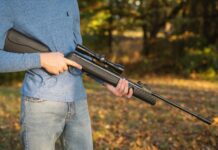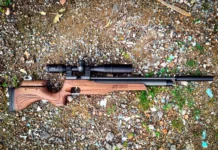Almost as important as tea processing is tea harvesting. As you may know, simply growing the tea plants can be a major challenge for the farmers, and it can take years to perfect.
Finally, after all the work the farmers have put into growing the tea, it comes time to pick the leaves. The tea harvest is something that comes a few times a year and it can actually determine the quality of a tea in many cases. The quality of a tea is not just determined by how the tea is grown and processed, but also how it is picked.
This said, let’s go into the detail to understand the tea harvesting process 🍃🍵
Table of Contents
What is tea harvesting?
Harvesting tea leaves is an important stage in the tea production process. As you may know by now, a farmer can greatly change the flavor of a tea by harvesting tea leaves from different parts of the tea plant or at different times. This is one of the many calculations a farmer needs to make, in order to improve the flavor of the tea he produces, and to maximize the yield of his tea field.
How to Harvest Camellia sinensis
Harvesting tea leaves is just like harvesting the leaves of any other plant. You want to ideally pick the leaves at the stem, so it doesn’t interfere with the integrity of the leaf itself. Tea harvesting can require a lot of skill and it can be a full time job. For a tea like gyokuro for example, one of the most prized leaf teas in Japan, you need to pick the top three leaves of the tea plant. These are the sweetest in flavor and highest in nutrients.
You first need to identify the top three leaves of the tea plant and then you need to grasp the stem of the tea plant a few millimeters below the third leaf. Then you can gently pull up until you hear a small pop sound, and the leaf should be separated. This method of harvesting tea leaves is extremely time consuming but it can yield great quality green tea.
How many times can you harvest tea in a year?
Harvesting tea leaves is something that can happen up to 4 times per year. After the tea is harvested for the first time in early spring, it can then be harvested a second time in June or July. Tea from the second harvest is the second highest in nutrients and flavor, so it is often used for more inexpensive teas. Farmers may also combine leaves from the first and second harvest to lower the price of the tea, while still providing plenty of flavor. During the summer, the temperatures in much of Japan can get quite hot, so it is a lot of work to harvest during this time.
The tea plant can be harvested a third time in late summer, but this is really more common in southern Japan. The third harvest of the plant will produce very low quality tea that is lower in nutrients. The tea plant needs sufficient time to pull nutrients from the soil and when it is harvested in such a short amount of time, it is unable to produce as strong of a flavor.
In mid October or mid November, some tea plants will be harvested for a fourth and final time. This is known to some as Aki Bancha, or fall harvest. Some farmers choose to sell this tea to customers, but farmers like Mr. Watanabe in Yakushima have a different plan for the leaves. He harvests the leaves in fall and then actually uses them as a fertilizer for the plant. His thought behind this is that the tea plant has absorbed nutrients from the soil all year, so now it must return some at the end of the year.
How are the best leaves selected?
If you are producing a premium quality Japanese green tea, it has to come from the first harvest. The tea plant is harvested up to 4 times from April, all the way to November and the quality declines with each harvest. After the last tea harvest in November, the tea plant has all winter to build up nutrients and it releases those nutrients in the first sprouts of the spring time. These fresh spring leaves are the most flavorful, and therefore they command the highest price.
Tea picked during the first harvest is called ‘Shincha‘ and it is one of the highest regarded teas in Japan. Serious tea drinkers will wait around all year to be among the first to purchase the new Shincha harvest in springtime. This practice used to be more common decades ago, but now with the widespread use of refrigeration, the tea can be kept fresh all throughout the year. Shincha tea, like the Shincha from Mr. Nuruki can be quite flavorful, with a light sweet and savory flavor.
Once fall comes around in Japan, it becomes especially important for farmers to fertilize their tea crop. The soil must be set up for the long winter ahead, so the tea plant can rest and absorb nutrients ahead of the spring harvest. A lot of farmers will use a type of straw on the base of the tea plants. This serves a few important purposes. First, it allows the tea plant to retain moisture by locking in water. It also fertilizes the tea plant and keeps the roots warm through the winter.
After a long winter, the sprouts of the tea plant will begin to come up in the spring and soon they are able to be harvested. The most common way to harvest the tea plant in Japan is with this motorized tea harvesting machine. This is the most efficient way to harvest tea, and it’s one of the reasons why the tea plants are organized in these neat rows. The harvester will trim these like hedges and overtime they will develop a neatly carved shape.
Tea Harvester
The tea harvester is one of the more common tools used in tea harvesting. This tool is operated by two people, as they hold each side of the machine and walk along each side of the tea rows to trim the top leaves.
After being cut, these leaves are kept inside a net and collected afterwards. This tea harvester combines the precision of hand picking with the speed of the mechanical tea harvester, which we will mention next.
Mechanical Tea Harvester
The mechanical tea harvester is an innovative invention when it comes to harvesting tea leaves. This machine is essentially a combine that can be drive between the rows of the tea plant and automatically harvest them. The advantage of the mechanical tea harvester is that it is much faster than the hand held tea harvester. It simply skims the top of the tea bush to trim the top leaves of the tea plant and collect them into a net.
The downside of the mechanical tea harvester is that it is not as accurate as the hand held tea harvester. Because the mechanical tea harvester is so large, it is very difficult to control and you can be as precise with the harvesting as you can be with the hand held version. The results will show up in the leaves. You want larger leaves in the case of gyokuro and sencha and as long as the leaves look good, the tea harvester must work just fine!
Is a Tea Harvester better than a Mechanical Tea Harvester?
Technically the regular hand held tea harvester is better than the mechanical tea harvester, but there are a few different variables. The mechanical tea harvester is large and less maneuverable, but as long as all the tea rows are the same height, it should be able to get the job done. For this reason tea harvested with the mechanical tea harvester is not necessarily worse, it just comes down to what the final leaves end up looking like.
Handpicked tea leaves
Occasionally, tea like ceremonial matcha and Gyokuro will be made with hand picked leaves. This method of tea harvesting extremely expensive in Japan, but the benefit is that the leaves are picked perfectly. On one day out of the year, people from all around the town will gather on this field to pick the fresh sprouts of the tea plant. There is a precise method to their picking. They want to select the top 3 leaves of the tea plant, so they will pick slightly underneath the third leaf. Once the leaf has been picked, they will drop it into their basket and then look for the next one.
If a farmer wants to produce a more inexpensive tea like Bancha, they will select leaves lower down on the tea plant, along with some stems as well. This method of tea harvesting can give the farmer a much higher yield. The leaves are more mature, and not quite as flavorful. The more mature leaves of a Bancha are lower in caffeine and they can produce a quite pleasant citrusy flavor, with notes of cereal, popcorn and wood.
As you can see, the harvest can be an important factor in determining how prized a tea is. Depending on when it is picked, how it is picked and where on the tea plant it is picked, the tea can be in a completely different category. If you are interested in trying some first harvest teas with larger leaf pickings, we highly suggest you checkout our selection of gyokuro teas. These teas are designed to have an incredibly sweet flavor and a savory finish. They are known as being the most sought after leaf teas in Japan and a lot of work goes into their harvest. Try them out for yourself and let us know what you think!







































![Air gun 101: The differences between .177 & .22 – Which jobs they do best ? [Infographic]](https://airgunmaniac.b-cdn.net/wp-content/uploads/2024/11/1773-150x150.jpeg)
